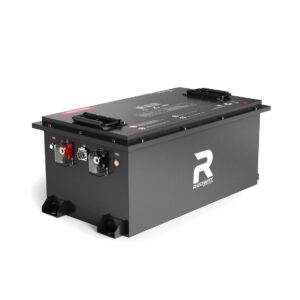What Is a 12-Volt Deep Cycle RV Battery and Why Do You Need One?
A 12-volt deep cycle RV battery is designed to provide sustained power for appliances and systems in recreational vehicles. Unlike car batteries, it delivers steady energy over long periods and withstands repeated discharges. These batteries are essential for RVs to operate lights, refrigerators, and other amenities off-grid. Lithium-ion, AGM, and flooded lead-acid are common types.
What Batteries Do Cell Phone Towers Use? A Comprehensive Guide
How Do 12-Volt Deep Cycle Batteries Differ from Regular Car Batteries?
Deep cycle RV batteries prioritize capacity over cranking power, allowing them to discharge up to 80% without damage. Car batteries deliver short, high-energy bursts for engine ignition but degrade if deeply discharged. RV batteries use thicker lead plates for durability during cycling, whereas automotive batteries have thinner plates optimized for surface-area current.

This structural difference enables deep cycle batteries to endure 200-500+ charge cycles compared to 30-50 cycles for car batteries. The electrolyte composition also varies – AGM and lithium RV batteries use immobilized electrolytes to prevent spillage during off-road travel. Charging methods differ too: RV batteries require multi-stage chargers to reach full capacity, while automotive alternators prioritize rapid surface charging.
What Are the Different Types of 12-Volt Deep Cycle RV Batteries?
| Type | Pros | Cons | Best For |
|---|---|---|---|
| Flooded Lead-Acid | Low cost, recyclable | High maintenance, ventilation needed | Budget users |
| AGM | Spill-proof, fast charging | Higher cost than FLA | Moderate users |
| Lithium-Ion | Lightweight, long lifespan | 3x higher upfront cost | Full-time RVers |
How Long Does a 12-Volt Deep Cycle RV Battery Last?
Lifespan varies: flooded lasts 3-5 years, AGM 4-7 years, lithium 8-10+ years. Factors include discharge depth, charging habits, temperature exposure, and maintenance. Avoid discharging below 50% for lead-acid or 20% for lithium. Regular equalization (for FLA) and temperature-controlled storage extend longevity. Voltage checks and load tests help monitor health.
Battery lifespan directly correlates with depth of discharge (DoD). A flooded battery discharged to 50% DoD daily will last about 1,200 cycles, but only 300 cycles at 80% DoD. Lithium batteries maintain consistent capacity through 3,000+ cycles even at 80% DoD. Temperature plays a crucial role – batteries lose 10% capacity for every 15°F below 80°F. Using a battery warmer in freezing conditions can prevent capacity loss.
Expert Views
“Modern lithium batteries revolutionize RV power, but proper charging infrastructure is non-negotiable,” says Jake Morrison, RV systems engineer. “I’ve seen too many AGM banks fail from chronic undercharging. Invest in a smart charger that adapts to battery chemistry. For lithium, prioritize a BMS with low-temp charging cutoff. Always size your battery bank 30% larger than calculated needs to avoid stress.”
FAQs
- Can I Use a Car Battery in My RV?
- No. Car batteries aren’t designed for deep discharges and will degrade quickly when powering RV appliances. Always use a deep cycle battery.
- How Often Should I Recharge My RV Battery?
- Recharge lead-acid batteries before dropping below 50% charge. Lithium can be recharged at any level. Avoid leaving batteries discharged for extended periods.
- Are Lithium RV Batteries Worth the Cost?
- Yes for frequent users—longer lifespan, faster charging, and lighter weight offset higher initial costs over time. For occasional use, AGM may suffice.
